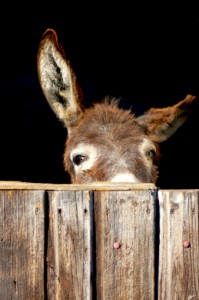 Today is National Walking Day which makes it a perfect time to talk about writing and walking. I’m not talking about the benefits of walking and writing at a treadmill desk, though I love mine and recommend you try one if you get the chance. Instead I’m talking about writers who walk as part of their writing life.
Today is National Walking Day which makes it a perfect time to talk about writing and walking. I’m not talking about the benefits of walking and writing at a treadmill desk, though I love mine and recommend you try one if you get the chance. Instead I’m talking about writers who walk as part of their writing life.
First, a quick reminder of body chemistry. Walking, like many other forms of exercise, improves blood flow. It makes the heart pump faster and that sends more blood and oxygen circulating throughout our body and brains. Scientists also believe that regular walking promotes new connections between brain cells and helps prevent brain tissue from withering with age. In short, walking is good for us. And long before scientists were espousing its benefits, writers seem to know it.
William Wordsworth, for instance, was a celebrated walker; his poetry is filled with walks through forests and up mountains. His friend and essayist Thomas De Quincy estimated that the poet walked nearly 180,000 miles during his lifetime, an average of six and a half miles a day starting from about age five.
Virginia Woolf depended on walks through England’s South Downs to “have space to spread my mind out in.” Henry David Thoreau walked three or four hours a day sauntering through woods and fields to collect his thoughts and help inform his prose. When Charles Dickens couldn’t sleep at night, he’d walk London’s streets until dawn. Even when insomnia wasn’t a problem, he was a walker, declaring “If I could not walk far and fast, I think I should just explode and perish.”
Danish writer Soren Kierkgaard wrote in the morning and walked the streets of Copenhagen in the afternoon, mentally composing paragraphs and working through new ideas. After the walk, he’d head back to the desk to get his thoughts down on paper.
Ernest Hemmingway also walked as a way to work out issues in his writing. “I would walk when I’d finished work or when I was trying to think something out,” he wrote in A Moveable Feast. “It was easier to think if I was walking and doing something.”
Henry Miller believed most writing is “done away from the typewriter, away from the desk. I’d say it occurs in the quiet, silent moments while you’re walking or shaving or playing a game or whatever.”
One of my favorite passages on walking is found in If You Want to Write: A Book about Art, Independence and Spirit by Brenda Ueland (the book is highly recommended, by the way). She writes: “I will tell you what I have learned myself. For me, a long five-or six-mile walk helps. And one must go alone and every day. I have done this for many years. It is at these times I seem to get re-charged.”
More recently, Orson Scott Card was quoted as saying that it’s “worth the time to take an hour’s walk before writing. You may write a bit less for the time spent, but you may find that you write better.”
And if that’s not enough incentive, how about this last quote from the prolific and successful J.K. Rowling who says, “There’s nothing like a nighttime stroll to give you ideas.”
Night or day, walking isn’t only good for you it’s also good for your writing. And that’s something to celebrate on this, National Walking Day.
 Since it’s summer and I’m trying to fit in a little more aimless wandering, I haven’t been showing up here as often as I normally do. I’m trying to post every couple of weeks until September when I’ll go back to weekly updates. The fall promises to be busy with a few exciting new projects. In the meantime, I’m enjoying the sunshine, the garden and time to read. Here’s what I’m dipping into this month:
Since it’s summer and I’m trying to fit in a little more aimless wandering, I haven’t been showing up here as often as I normally do. I’m trying to post every couple of weeks until September when I’ll go back to weekly updates. The fall promises to be busy with a few exciting new projects. In the meantime, I’m enjoying the sunshine, the garden and time to read. Here’s what I’m dipping into this month: It’s been a ‘bookish’ few weeks around here as the Graduate packed up and moved into his own space. Change is exciting, though the process of integrating change can be a messy one. And things did get chaotic as we helped him sort and toss and pack and schlepp his belongings across town to his new place. We sorted through a lot of books. A LOT of books. It was like a snapshot of his growing up years as we paged through picture books, early readers, teen novels and his more recent adult reads, including a number of educational textbooks.
It’s been a ‘bookish’ few weeks around here as the Graduate packed up and moved into his own space. Change is exciting, though the process of integrating change can be a messy one. And things did get chaotic as we helped him sort and toss and pack and schlepp his belongings across town to his new place. We sorted through a lot of books. A LOT of books. It was like a snapshot of his growing up years as we paged through picture books, early readers, teen novels and his more recent adult reads, including a number of educational textbooks.
 “I hope you guys are in school because this really isn’t the kind of career type job I like to see people in.”
“I hope you guys are in school because this really isn’t the kind of career type job I like to see people in.” Spring is bursting out all over the place. I love the warmth of the sun on my back as I clean up the pots on the deck, and it’s uplifting to see the tulips blooming in the back yard when I open the door to let Team Sheltie outside too. Like every other spring, I have a long list of garden chores to do. I’ve spent a little time outside lately but not as much as I’d like (or as much as the garden needs). Instead I’ve been slammed with some unexpected deadlines and I’ve been staying inside to meet them. Reading time has been at a premium too. But I always manage to find a few minutes . . . Here’s what I’m reading this month.
Spring is bursting out all over the place. I love the warmth of the sun on my back as I clean up the pots on the deck, and it’s uplifting to see the tulips blooming in the back yard when I open the door to let Team Sheltie outside too. Like every other spring, I have a long list of garden chores to do. I’ve spent a little time outside lately but not as much as I’d like (or as much as the garden needs). Instead I’ve been slammed with some unexpected deadlines and I’ve been staying inside to meet them. Reading time has been at a premium too. But I always manage to find a few minutes . . . Here’s what I’m reading this month. Today is National Walking Day which makes it a perfect time to talk about writing and walking. I’m not talking about the benefits of walking and writing at a treadmill desk, though I love mine and recommend you try one if you get the chance. Instead I’m talking about writers who walk as part of their writing life.
Today is National Walking Day which makes it a perfect time to talk about writing and walking. I’m not talking about the benefits of walking and writing at a treadmill desk, though I love mine and recommend you try one if you get the chance. Instead I’m talking about writers who walk as part of their writing life. Go pick up a funny book and read it. Please. Or visit a funny website or watch something outrageous on YouTube or tell a joke that makes someone laugh until they snort questionable substances out their nose.
Go pick up a funny book and read it. Please. Or visit a funny website or watch something outrageous on YouTube or tell a joke that makes someone laugh until they snort questionable substances out their nose.
 Nature is giving me another writing lesson.
Nature is giving me another writing lesson. If you’re a squeamish, goat- loving vegan this blog may not be for you.
If you’re a squeamish, goat- loving vegan this blog may not be for you.  I don’t need an excuse to check out author or writing-related sites and you probably don’t either. But if you want to add a new blog stop to your regular roster or you simply want a few minutes away from your WIP, check out any one of the following links. All of these blogs offer up great content; some are inspirational, others are educational and occasionally they’re both.
I don’t need an excuse to check out author or writing-related sites and you probably don’t either. But if you want to add a new blog stop to your regular roster or you simply want a few minutes away from your WIP, check out any one of the following links. All of these blogs offer up great content; some are inspirational, others are educational and occasionally they’re both.
Comments